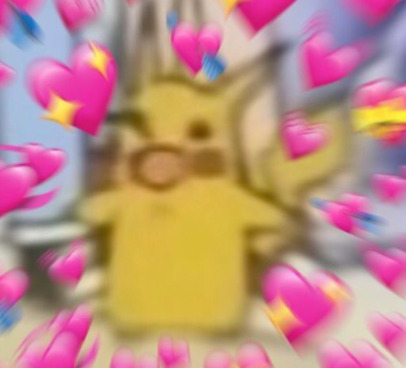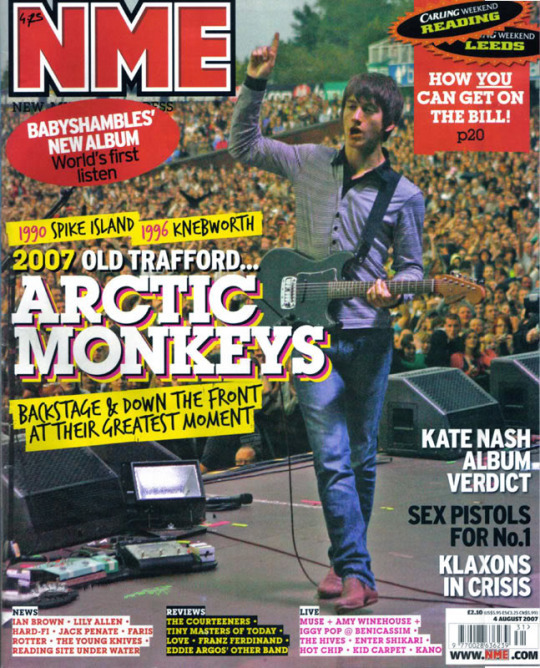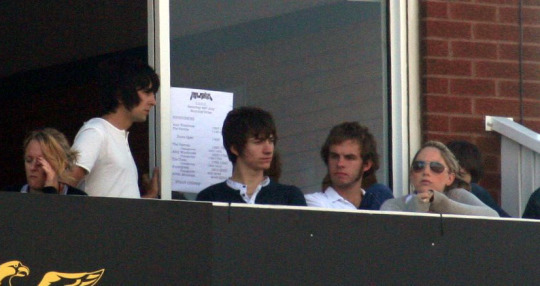#this was in 1990 at knebworth park
Explore tagged Tumblr posts
Text


pettiest man on earth paul mccartney refuses to end his part of the concert because he doesn't want pink floyd to upstage him
311 notes
·
View notes
Note
Freddie Mercury
The Great Showman
Our paper will be about the flamboyant frontman, songwriter, and singer for Queen, Freddie Mercury. He was born as Farrokh Bulsara on September 5th, 1946 in Stone Town, Zanzibar which is now in Tanzania. Freddie was born with four hyperdontia incisors which Mercury attributed to his vocal range and why he never got them fixed later in life.
Mercury was born to Parsi parents, Jer and Bomi Bulsara who were originally from India but they immigrated to Zanzibar because of Bomi’s job with the British Colonial Service. Freddie has a younger sister named Kashmira Bulsara who was born around the time he started his boarding school. The family practiced Zoroastrianism which Freddie never held a strong belief in.
Freddie spent most of his childhood in India and took piano lessons at age seven while living with family and at the age of eight he was sent off to study at St. Peter’s School in Panchgani. It was at St. Peter’s that Freddie started to call himself “Freddie”. At the age of twelve, he started a band called “The Hectics”. A friend recalled that Freddie had "an uncanny ability to listen to the radio and replay what he heard on piano". In 1963 he moved back in with his parents and the following year in 1964 they fled to England from the Zanzibar Revolution.
Mercury studied art and graphic design at Ealing Art College he most likely graduated with a diploma in the year 1969 but it could be possible 1968 as well. With his skills Freddie would later go on to design his band, Queen’s, logo. Following graduation he would join a series of bands as he worked in Kensington Market selling second hand Edwardian clothes and scarfs alongside future band mate Roger Taylor.
In early 1970, Tim Staffell would leave Roger Taylor and Brian May’s band Smile and in April of that same year Freddie would join Smile and become their lead singer. A year later in 1971 bassist John Deacon would join the band completing it. Mercury chose the name “Queen” for the band ignoring the warnings from his band mates and studio. Freddie later said about the name Queen,
“"It's very regal obviously, and it sounds splendid. It's a strong name, very universal and immediate. “I was certainly aware of the gay connotations, but that was just one facet of it."” (Mercury, Freddie, 1970)
Also around this time Freddie Bulsara legally changed his name to Freddie Mercury.
So Freddie’s speaking tone was in the baritone range which means it's between bass and tenor, most of his songs were in the tenor range. Mercury’s range extended from bass low F to soprano high F, also could belt up to tenor high F.
A quote from Donna Soto-Morettini book “Popular Singing: A Practical Guide To: Pop, Jazz, Blues, Rock, Country and Gospel, A & C Black” says this about Freddie’s vocals,
“His technique was astonishing. No problem of tempo, he sang with an incisive sense of rhythm, his vocal placement was very good and he was able to glide effortlessly from one register to another. He also had a great musicality. His phrasing was subtle, delicate and sweet or energetic and slamming. He was able to find the right colouring or expressive nuance for each word.” (Soto-Morettini, Donna, book not available for preview)
In 2003 Mercury was posthumously put into the Songwriters Hall of Fame and in 05 all four Queen members were awarded a Ivor Novello Award and that was for Outstanding Song Collection from the British Academy of Songwriters, Composers, and Authors.
Now while Queen is a classic rock band they didn’t just write rock they wrote a wide variety of music genres including but not limited to: rockabilly, gospel, disco, heavy metal, and progressive rock.
In a 1986 interview Mercury said, “I hate doing the same thing again and again and again. I like to see what's happening now in music, film and theatre and incorporate all of those things.” (Mercury, Freddie, 1986)
And Mercury did extravagant performances on stage for his audience; he even got them to join in vocal warmups with him. It was like a different personality came out on stage and he was this energetic guy who lit up the whole room. Mercury performed an estimated 700 concerts with Queen. Mercury's final live performance with Queen took place on August 9th, 1986 at Knebworth Park in England which drew an attendance estimated as high as 200,000. With the British national anthem playing at the end of the concert, Freddie’s final act on stage saw him draped in a robe, holding a golden crown above his head, as he bid farewell to the crowd one last time.
Besides Queen, Freddie did have a small solo career. He had two full solo albums, “Mr. Bad Guy” released in 1985 and “Barcelona” released in 1988.
In the early 70s, he dated Mary Austin but the relationship grew cold when Freddie had an affair with David Minns in the mid-70s. Mary remained close with Mercury until he passed. In the 80s, Freddie settled down with hairdresser Jim Hutton and the two got “married” even if same sex marriage wasn’t legalized until the 2000s in England. He wore the ring Jim gave him forever, it was even cremated with him.
In either 1985 or 1987, Freddie was diagnosed with AIDS which was a death sentence back then, proper medications and treatment for it wasn’t really there yet. A few years later Jim was diagnosed with HIV in 1990. On November 24th, 1991 Mercury passed away from bronchial pneumonia resulting from AIDS, he was just 45. He died with his husband at his bedside. Funeral services were held on the 27th and he was cremated shortly after. His ashes whereabouts are unknown and never to be told. There is a memorial plaque with his birth name on it at Kensal Green Cemetery in London England.
Even though Freddie never fathered children he was the godfather to Mary’s oldest son Richard. And he fathered many cats in his lifetime, having somewhat over a dozen cats in his life. Even a black cat showed up at his funeral. This concludes the short long lived life of Freddie Mercury

I ADORE THIS!!!!!!! The writing was perfect,the wording amazing and it was just a great essay!!!!!!!!!!!!!!!!! That teacher damn sure should've gave you a 100/100!!!!!!!!!!!!!!!! I loved it,thank you very much Bestie for sharing this!!!!!!!!!!!!!!!!!! <33333333333
5 notes
·
View notes
Photo

Pink Floyd played The Silver Clef Award Winners Concert at Knebworth on 30 June 1990. On 30 April 2021 it was released as a live album. #pinkfloyd #liveatknebworth1990 #davisgilmour #nickmason #richardwright #prog #progrock #albumart #albumcovers #vinyl #brushpen #watercolour (at Knebworth Park) https://www.instagram.com/p/CQ66RmQsvVa/?utm_medium=tumblr
#pinkfloyd#liveatknebworth1990#davisgilmour#nickmason#richardwright#prog#progrock#albumart#albumcovers#vinyl#brushpen#watercolour
0 notes
Video
LSMS! To celebrate the 8 year anniversary of Alice in Chains’ TDPDH - here is STONE! Live from Sonisphere, July 6, 2014 in Knebworth, UK! “Stone" is a song by American rock band Alice in Chains and the second single from their fifth studio album, The Devil Put Dinosaurs Here (2013). The song was released as a single on March 25, 2013, reached No. 1 on Billboard's Mainstream Rock chart, and stayed on the chart for 20 weeks.A music video directed by Robert Schober was released for the song. The song was first played live on April 10, 2013, during Alice in Chains' appearance on Jimmy Kimmel Live in Los Angeles. The lyrics to "Stone" are printed on the bottom plate of a limited edition of Jerry Cantrell's signature Dunlop Cry Baby. ——————————————————— #nehistripesseattle #aliceinchains #LSMS #laynestaley #mikestarr #mikeinez #chainer4life #the1loveaic #seankinney #HOT #jerrycantrell #1990s #grungerock #seattlesound #greatestbandintheworld (at Knebworth Park) https://www.instagram.com/p/CPb-C4lJzju/?utm_medium=tumblr
#nehistripesseattle#aliceinchains#lsms#laynestaley#mikestarr#mikeinez#chainer4life#the1loveaic#seankinney#hot#jerrycantrell#1990s#grungerock#seattlesound#greatestbandintheworld
0 notes
Audio

It’s now 10 years ago Arctic Monkeys organised their very first own festival in the line of Don Valley Bowl ’11 and Finsbury Park ’14, at the peak of their UK popularity: 2 nights of 50,000 people at the grounds of Lancashire County Cricket Club, Manchester at 28 and 29 July 2007.
What was announced as an one-off show sold out instantly, with a second date going on sale the same morning. Tickets costed £28.50 plus booking fee and were limited to 4 tickets per person, all ages. Gates were open at 2pm. Support acts were hand picked by the band, consisting of the Japanese Beatles tribute act The Parrots, The Coral, Amy Winehouse and Supergrass.

Alex Turner watching The Coral’s support slot from a skybox with Miles Kane’s then Little Flames (later The Rascals) band members Greg Mighall (left) and Joe Edwards (right).
NME, who obviously often steers away from using hyperboles, branded the event “1990 Spike Island, 1996 Knebworth, 2007 Old Trafford”.
Even sour grapes The Guardian reviewed it as: “In the Britpop era, Oasis overreached themselves by playing Knebworth and subsequently burst their bubble, but there are no such problems for Arctic Monkeys. As thousands surge towards the stage for Britain’s hottest band, Fluorescent Adolescent demonstrate what a stadium pop experience should sound like.” (https://www.theguardian.com/music/2007/jul/30/popandrock.arcticmonkeys)
And a mid-00’s UK rock festival wasn’t a complete experience without some drama. The event was overcrowded, resulting in fights and crowd crushes, making the band having to put the second night to a halt 4 songs in due to security measures. Also, the event was severely understaffed and under facilitated, resulting in overly long traffic, parking and beer queues, but especially toilet lines so long the crowd decided to take measures into their own hands, resulting in The Sun branding the Old Trafford cricket ground “Old Yellow Pitch”, after cricket players complained of a “diabolic smell” when the sports season started a few weeks later (http://www.gigwise.com/news/36590/old-yellow-pitch-arctic-monkeys-flood-cricket-ground-with-piss), some audience members still traumatised 5 years after the fact (https://www.theguardian.com/music/musicblog/2012/jul/03/stone-roses-wee-problem#comment-16975496, comment section by “floyd05”).
Of course, that wasn’t all, on the first night there was also a sound cut during the first instrumental chorus of ’Balaclava’, with the crowd chanting “you’re not singing any more!”, a chant often used by supporters of a team to rub something in at the other team’s fans: https://www.youtube.com/watch?v=Sd–i1neZsg
They came on to the ‘Rocky’ theme and went straight into the then brand new hit single ‘Fluorescent Adolescent’ as opener, which hit the UK charts at #5 that week, being welcomed to massive riff singalongs, a sign o’ the times: https://www.youtube.com/watch?v=gAgOB4TCtRs

The backdrop on the sides were the familiar ‘Favourite Worst Nightmare’ “objects”.
A guy named Miles Kane of The Little Flames joined the band for the brand new B-side ‘Plastic Tramp’ plus ‘505’ for an at the time rare encore slot, 2 songs he played the lead guitar for on the studio cuts. Listen above to a rare soundboard recording of ‘Plastic Tramp’ from the second night. The full setlist:

Shane Meadows filmed parts of mockumentary Le Donk & Scor-zay-zee during the weekend. Paddy Considine portrayed Le Donk, a fictional roadie working for Arctic Monkeys, and at one point in between support slots he went up on stage, being booed off by 50,000+ movie “extras”: https://www.youtube.com/watch?v=5jNJ00-qfr0 (2007 potato cam audio alert).
The band and roadies themselves all feature in that 2009 movie, and this is a deleted scene with Nick O’Malley and Matt Helders: https://www.youtube.com/watch?v=E-3KmyL4Bjc
Tomorrow a bit about the merch.
221 notes
·
View notes